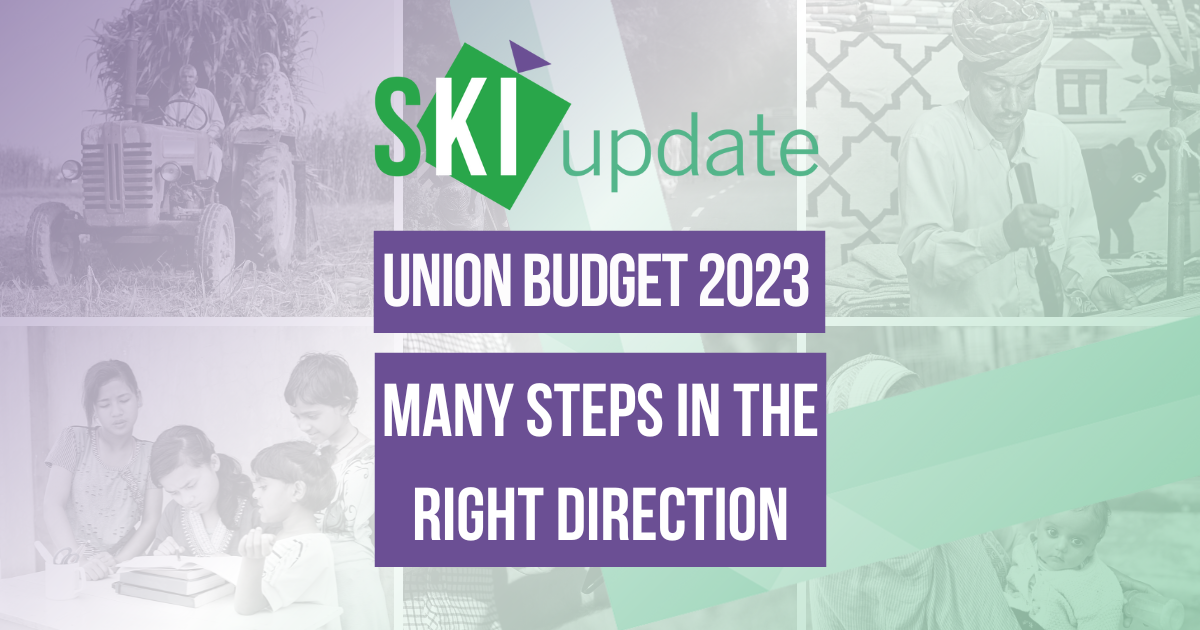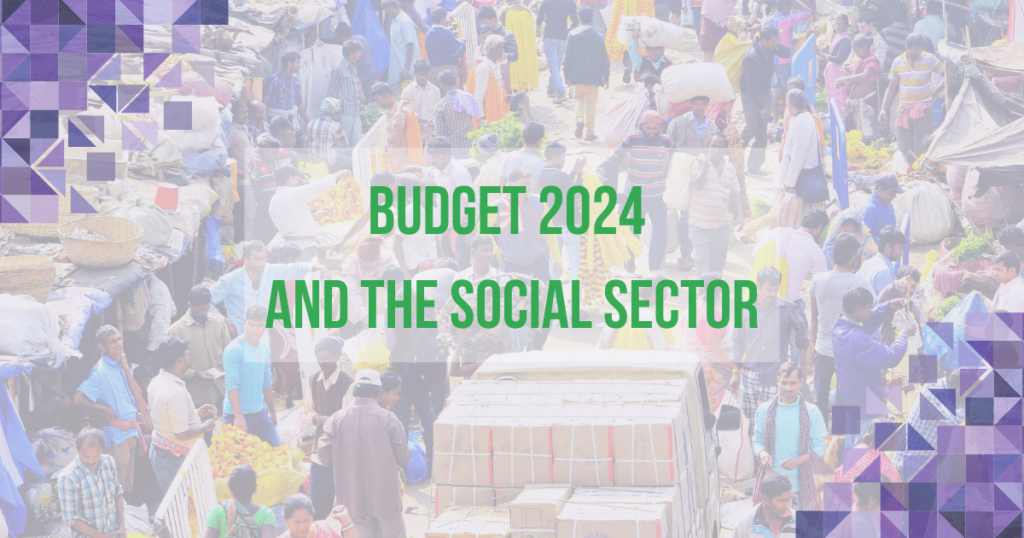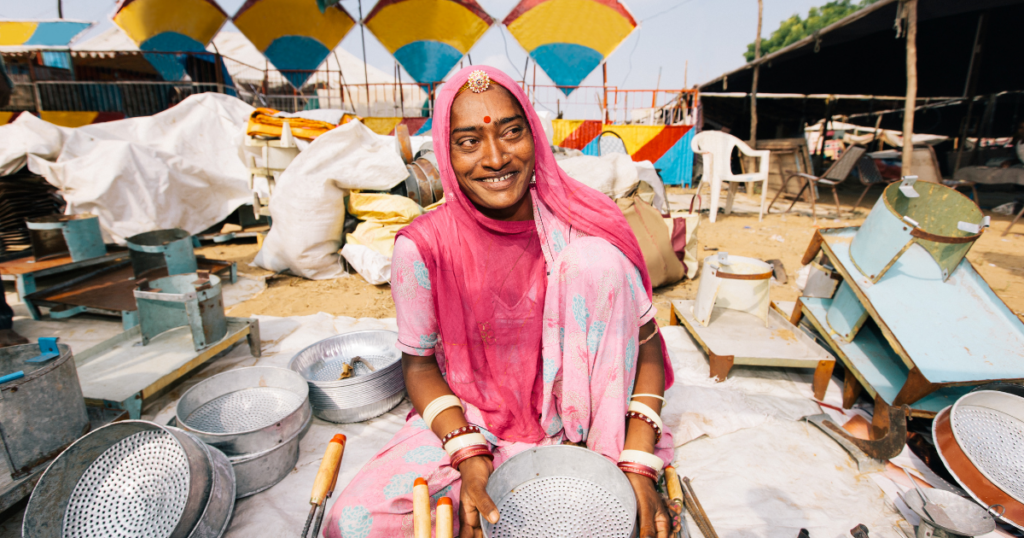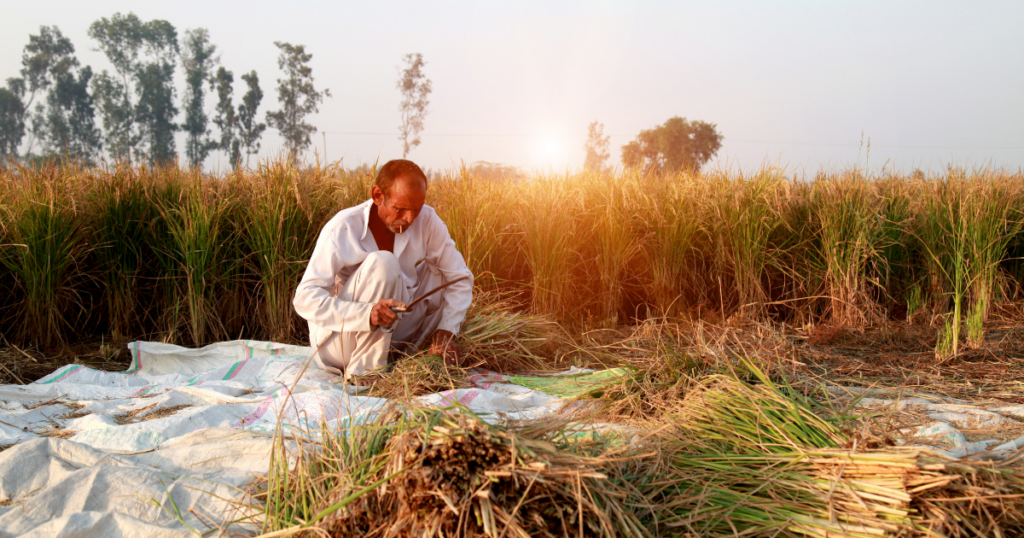Development is top of mind for the government.
We think that there are several aspects of Finance Minister Nirmala Sitharaman’s February 1st Budget 2023 speech that are encouraging for the development sector. Three of the four areas that the government is focused on for the next 25 years as India approaches 100 years of independence are directly related to the sector – economic empowerment of women, traditional artisans and craftspeople and green growth. Inclusive development, digital public infrastructure, millets, environment, skilling and building upon the Aspirational Districts Programme featured prominently in the FM’s speech.
Headline numbers may be underwhelming…
The overall amount of budgetary allocation to agriculture increased by only 5% year-on-year, and its proportion to the total budget decreased from 4.2% last year to 3.9%. Allocations to four key livelihood-centric ministries were reduced by 3% in aggregate and the budgetary drop in allocation for MGNREGA by 33% was particularly a bit of a let-down. Provisions in the Health sector were a mixed bag.
Two points need to be kept in mind while evaluating the numbers. One, the recent COVID-19-affected years have necessitated higher government budgets towards social sector schemes, in some cases, and the budgets are bound to normalise at some point. For example, the expenditure on social services by central and state governments, as defined by the Economic Survey, rose 31% in FY22 (Revised Estimates) after a CAGR of just 10% in the preceding five years. FY23 Budget Estimates suggested a further 10% increase. Two, the efficiency of utilising the budgets is more important than the increase in them, and we think that there is enough government focus on that.
… but the Budget has taken several steps in the right direction.
The focus on increasing efficiency is apparent in sectors such as agriculture, where the budget works towards a digitally-equipped and sustainable future that can draw rural youth and entrepreneurs, and can encourage private investment. We are particularly enthused with the continuing focus on digital initiatives, especially in the areas of education, jobs, skilling, commerce and agriculture.
The National Digital Health Mission continues to be a priority with a continued increase in budget allocation, aligned with India’s agenda of the use of technology for accessibility, ease of availability, and affordability in health service delivery during our G20 presidency. The focus on MSMEs and skill development should reduce dependence on budgetary support in the long term. The continuing focus on public-private partnerships should decrease the burden on public spending and bring in private capital. Women empowerment through both financial inclusion and entrepreneurship is another positive. There has been renewed focus on PVTGs (particularly vulnerable tribal groups) via a new development mission aimed towards providing basic facilities, education, infrastructure and livelihood. A new Green Credit programme and the recently launched Green Hydrogen Mission seek to meet India’s net-zero carbon emission goal by 2070.
We still have a long road ahead.
Given the massive requirements of the social sector in our country, coupled with the necessity of balancing economic and social growth with fiscal prudence, especially given global uncertainties, there are several budgetary areas that are bound to be unsatisfactory. Key areas where we would like more action include ensuring increasing farmer income along with increasing efficiencies, strong policies related to data empowerment and privacy, social security measures, focus on marginalised communities other than women and increased spending on health (as a percentage of GDP) to take us closer to countries such as Brazil and Mexico. While the Budget increased allotment towards education by 8%, it is ironically one area where there is still a lot to be done. The actual expenditure on education is often lower than that allocated, and at 3%, we are still far away from NEP 2020’s vision of earmarking 6% of GDP for education.




